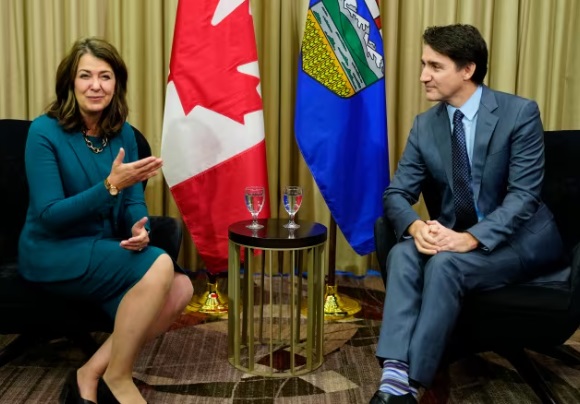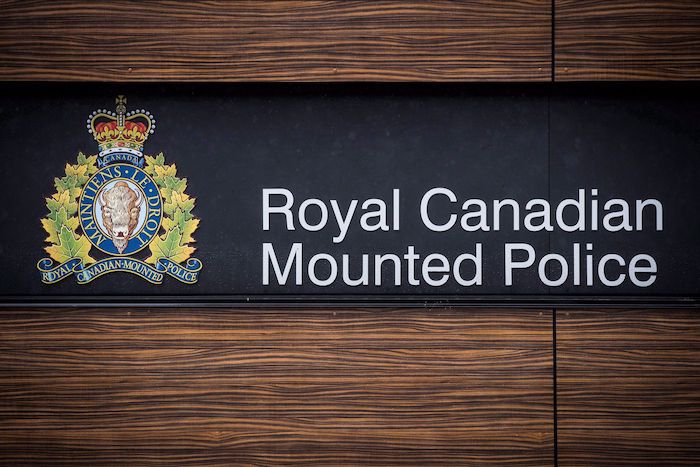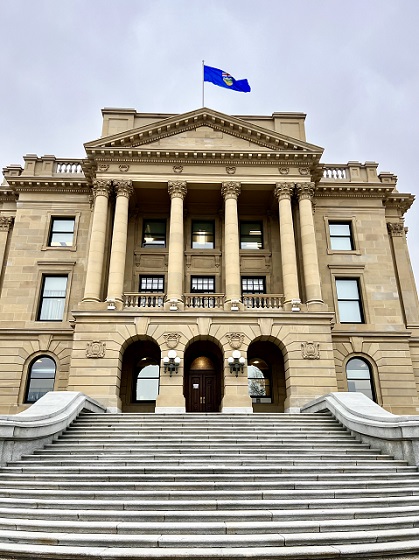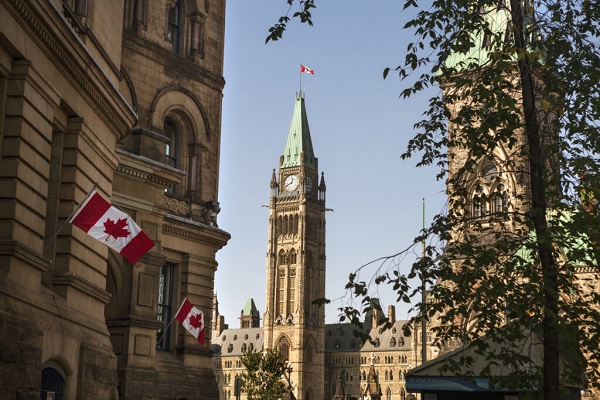Alberta
7 more Albertans die from COVID-19. 1,500 total cases. April 10 Update

From the Province of Alberta
Update 28: COVID-19 pandemic in Alberta (April 10 at 4:45 p.m.)
There are now 713 confirmed recovered cases of COVID-19 in the province.
With 49 new cases reported, the total number of cases in Alberta is 1,500.
Seven Albertans have died since the last report, bringing the total deaths in the province to 39.
Four of these deaths were residents at the McKenzie Towne continuing care facility.
Latest updates
- Albertans are strongly encouraged to stay home this long weekend.
- Cases have been identified in all zones across the province:
- 917 cases in the Calgary zone
- 386 cases in the Edmonton zone
- 97 cases in the North zone
- 72 cases in the Central zone
- 26 cases in the South zone
- Two cases in zones yet to be confirmed
- Of these cases, there are currently 48 people in hospital, 13 of whom have been admitted to intensive care units (ICU).
- 201 cases are suspected of being community acquired.
- Five new deaths are from the Calgary zone, bringing the total in this zone to 27. Two additional people have died in the Edmonton zone, bringing the number of deaths to seven in this zone. A total of four people have died in the North zone, and one person has died in the Central zone.
- There have now been 17 deaths at the McKenzie Towne continuing care facility.
- Stronger outbreak measures have been put in place at continuing care facilities. To date, 164 cases have been confirmed at these facilities.
- There have been 70,080 people tested for COVID-19 and a total of 72,370 tests performed by the lab. There were 2,123 people tested in the last 24 hours.
- Aggregate data, showing cases by age range and zone, as well as by local geographic areas, is available online at alberta.ca/covid19statistics.
- All Albertans need to work together to help prevent the spread and overcome COVID-19.
- Restrictions remain in place for all gatherings and close-contact businesses, dine-in restaurants and non-essential retail services. A full list of restrictions is available online.
- Albertans are prohibited from attending all public recreation facilities, including golf courses. Staff are allowed to maintain courses as long as they follow public health measures that prevent the risk of transmitting COVID-19. More information on these measures can be found online.
Updates to continuing care facility rules
As continuing care facilities are most at risk of experiencing serious effects from COVID-19, more stringent measures are being taken to protect residents and staff.
To further protect residents and staff from exposure to COVID-19 through asymptomatic individuals, continuing care workers will now be required to wear masks at all times when providing direct patient care or working in patient care areas.
Workers in long term care and supportive living sites will only be allowed to work at one site in an effort to reduce the spread between locations. These measures will take effect next week.
To protect and provide flexibility for both workers and employers as measures are implemented, the Minister of Labour and Immigration signed a Ministerial Order today. The Government of Alberta is considering financial supports for health care aids and facility operators to minimize the impacts of this change. Details will be communicated to providers and employees in the coming days.
Fact sheet for kids now available
Many parents and caregivers are getting questions from young people in their lives. To help respond, a new fact sheet is available online at Alberta.ca/COVID19. It is aimed at kids and their families and is meant to spur open, honest conversations with kids about coronavirus and the measures being taken to prevent the spread.
Temporary changes to legislation and regulations (Service Alberta)
Service Alberta is making temporary changes to several acts and regulations to help businesses, public bodies and non-profits remain compliant as they focus their efforts on responding to COVID-19.
Under the authority of the Public Health Act, Service Alberta has issued a Ministerial Orderthat will temporarily suspend or modify provisions related to timelines, location and distance, as well as utility payments and access to information requests.
These temporary changes will remain in effect for the duration of Alberta’s State of Public Health Emergency.
More information is available online.
Ensuring access to food
Government is providing $5 million to support food banks and community organizations, such as charities and not-for-profits, as they support secure access to food for vulnerable Albertans.
Expanding testing to meet needs of Albertans
Alberta has expanded access to COVID-19 laboratory tests to better trace the spread of the novel coronavirus in hard-hit areas and in vulnerable residents. Testing is being offered to three additional groups of individuals exhibiting symptoms of COVID-19 including cough, fever, runny nose, sore throat or shortness of breath:
- symptomatic people living in the Calgary Zone
- symptomatic people who live with someone aged 65 years or older
- essential workers whose workplaces remain accessible to the public
Read the full list of people eligible for testing here. People can access tests by completing the COVID-19 self-assessment online.
The chief medical officer of health will examine and adjust testing protocols and access to COVID-19 tests based on the changing situation in Alberta.
Stay home and in Alberta this long weekend
Albertans are being strongly encouraged to stay home, in their communities, in the province and off the highways this long weekend to reduce the spread of COVID-19.
Alberta and British Columbia have released a joint statement asking families and friends to stay in their home provinces and celebrate the holidays virtually. This will reduce the risk of highway crashes – tying up emergency and medical responders who are busy with pandemic planning and care – and help slow the spread of the novel coronavirus between families and provinces.
COVID-19 health care for out-of-country visitors
To limit the potential spread of the novel coronavirus, individuals visiting Alberta from another country will receive physician and hospital services for the treatment of COVID-19 – even if they do not have health coverage or the ability to pay. This temporary measure will protect Albertans and encourage visitors to obtain treatment for COVID-19. Physicians may submit claims for this service using the new COVID-19 billing process. More information about the billing process will be provided to physicians.
Alberta Connects Contact Centre
The Alberta Connects Contact Centre continues to operate over the long weekend, and will be available to Albertans from 8:15 a.m. to 4:30 p.m., April 10-13. Direct lines to specific services (such as MyAlberta Digital Identity) will be closed. Albertans should call 310-4455 for assistance.
Mental health supports
Confidential supports are available to help with mental health concerns. The Mental Health Help Line 1-877-303-2642 and the Addiction Help Line at 1-866-332-2322 are available between 7 a.m. and 11 p.m., seven days a week. Online resources provide advice on handling stressful situations or ways to talk with children.
Family violence prevention
A 24-hour Family Violence Information Line is available at 310-1818 to get anonymous help.
Alberta’s One Line for Sexual Violence is available at 1-866-402-8000 from 9 a.m. to 9 p.m. in more than 170 languages.
Information sheets and other resources on family violence prevention are available at alberta.ca/COVID19.
Quick facts
- The most important measures that Albertans can take to prevent respiratory illnesses, including COVID-19, is to practise good hygiene.
- This includes cleaning your hands regularly for at least 20 seconds, avoiding touching your face, coughing or sneezing into your elbow or sleeve, disposing of tissues appropriately.
- Anyone who has health concerns or is experiencing symptoms of COVID-19 should complete an online COVID-19 self-assessment.
- For recommendations on protecting yourself and your community, visit alberta.ca/COVID19.
Alberta
Free Alberta Strategy backing Smith’s Provincial Priorities Act

News release from Free Alberta Strategy
Premier Danielle Smith had a message for Ottawa last week.
Keep out.
On Wednesday, the Premier rolled out her latest weapon in the fight against federal intrusions into provincial jurisdiction.
If passed, Bill 18 – the Provincial Priorities Act – aims to align federal funding with provincial priorities, ensuring that said funding reflects Alberta’s interests.
The legislation stipulates that any agreements between the federal government and any provincial entities – including municipalities – must receive provincial approval to be considered valid.
Smith has already given it a nickname: “the stay-out-of-my-backyard bill.”
It’s an apt description of the legislation, especially considering that’s what the federal government has been doing for years – encroaching into Alberta’s jurisdiction.
The legislation shouldn’t come as a surprise to anyone.
We all know that most deals the Alberta government enters into with the federal government don’t work out for Albertans.
We end up paying more in federal taxes than gets spent in federal spending on the programs.
The programs come laden with restrictive conditions that undermine our autonomy, and are often detrimental to our ability to provide the services.
This is especially true with regard to the recent agreement between Ottawa and the provinces that allows the federal government to nationalize childcare.
The childcare agreement has come under heavy criticism due to funding shortfalls in the deal.
It also applies to housing, where despite Alberta accounting for 12% of the national population and experiencing the most rapid population growth, it received a mere 2.5% of the total $1.5 billion in federal housing funding last summer.
Jason Nixon, Minister of Seniors, Community and Social Services, is in charge of housing in Alberta – which is provincial jurisdiction.
On the latest rollout of conditional federal housing handouts, Nixon isn’t buying.
“We will not be bribed, with our own money, to increase the time it takes to get homes built with green energy that makes homes more expensive.”
The theory also applies to the federal government’s latest gambit – doing an end-around provincial negotiations and going directly to municipalities, who seem more interested in taking the money than the conditions attached.
Municipalities are provincial jurisdiction.
Bill 18 mandates that entities within Alberta’s jurisdiction, such as municipalities, universities, school boards, housing agencies, and health authorities, must seek the province’s approval before engaging in, modifying, extending, or renewing agreements with Ottawa.
Agreements between the federal government and provincial entities lacking Alberta’s endorsement will be deemed illegal under this legislation.
That’s Premier Smith’s message.
She’s had enough of it.
“It is not unreasonable for Alberta to demand fairness from Ottawa. They have shown time and again that they will put ideology before practicality, which hurts Alberta families and our economy. We are not going to apologize for continuing to stand up for Albertans so we get the best deal possible.
“Since Ottawa refuses to acknowledge the negative impacts of its overreach, even after losing battles at the Federal and Supreme Courts, we are putting in additional measures to protect our provincial jurisdiction to ensure our province receives our fair share of federal tax dollars and that those dollars are spent on the priorities of Albertans.”
Municipal Affairs Minister Ric McIver had additional thoughts:
“For years, the federal government has been imposing its agenda on Alberta taxpayers through direct funding agreements with cities and other provincial organizations. Not only does Alberta not receive its per capita share of federal taxpayer dollars, the money we do receive is often directed towards initiatives that don’t align with Albertan’s priorities.
“Albertans from all corners of the province expect our federal share of taxes for roads, infrastructure, housing and other priorities – not federal government political pet projects and programs in select communities.”
The Provincial Priorities Act is based on existing provincial legislation in Quebec – called “An Act Respecting the Ministère du Conseil executif” – which prohibits any municipal body from entering into or negotiating an agreement with the federal government or its agencies without express authorization from the Quebec government.
That’s right – the Quebec government has the same rule!
So, this boils down to the same argument we’ve been making for years – if Ottawa wants to step into our backyard, it must first seek Alberta’s approval.
Enough is enough – we won’t stand idly by as our interests are trampled upon.
It’s time for Ottawa to recognize Alberta’s autonomy and respect our right to determine our own future.
At the Free Alberta Strategy, we know that constant vigilance is necessary – for every fence we put up, the federal government tries to find a way around it.
We’ll continue to bring you information about what’s happening in Alberta’s backyard and fighting to keep Ottawa out.
The Free Alberta Strategy Team
Alberta
Building a 21st century transit system for Calgary

From the Frontier Centre for Public Policy
Calgary Transit is mired in the past, building an obsolete transit system designed for an archaic view of a city. Before the pandemic, transit carried 45 percent of downtown Calgary employees to work, but less than 10 percent of workers in the rest of the Calgary urban area, showing that Calgary Transit doesn’t really serve all of Calgary; it mainly serves downtown.
That would have worked in 1909, when Calgary’s first electric streetcars began operating and most jobs were downtown. By 2016, less than 15 percent of Calgary jobs were downtown, and the pandemic has reduced that number further.
Rather than design a transit system that serves the entire urban area, Calgary Transit light-rail system reinforced its downtown focus. Transit ridership has grown since the city’s first light-rail line opened in 1981, but it was growing faster before the light rail began operating than it has since then. Now Calgary Transit is planning even more downtown-oriented light-rail lines.
Light rail is an expensive form of low-capacity transit. The word “light” in light rail refers not to weight but to capacity: the American Public Transportation Association’s transit glossary defines light rail as “an electric railway with a ‘light volume’ traffic capacity.” While a light-rail train can hold a lot of people, for safety reasons a single light-rail line can move no more than about 20 trains per hour in each direction.
By comparison, Portland, Oregon runs 160 buses per hour down certain city streets. An Istanbul busway moves more than 250 buses per hour. Bogota Columbia busways move 350 buses per hour. All these transitways cost far less per mile than light rail yet can move more people per hour.
Once they leave a busway, buses can go on any city street, reaching far more destinations than rail. If a bus breaks down or a street is closed for some reason, other buses can find detours while a single light-rail breakdown can jam up an entire rail line. If transportation patterns change because of a pandemic, the opening of a new economic center, or the decline of an existing center, bus routes can change overnight while rail routes take years and cost hundreds of millions of dollars to change.
To truly serve the entire region, Calgary Transit must recognize that buses are faster, more flexible, and can move more people per hour to more destinations at a lower cost than any rail system. It should also recognize that modern urban areas have many economic centers and use buses to serve all those centers.
Besides downtown, Calgary’s major economic centers—the airport, the University of Calgary, Chinook Center, the Seton health center, and others—are mostly located near freeway on- and off-ramps. Calgary Transit should identify ten or so such centers geographically distributed around the region. It should locate transit centers—which need be no more than curbside parking reserved for buses with some modest bus shelters—near the freeway exchanges closest to each center.
It should then operate frequent (up to five times per hour) non-stop buses from every center to every other center. A few secondary transit centers might have non-stop buses operate to just two or three other centers. Local bus routes should radiate away from each center to serve every neighborhood of the Calgary urban area.
Since non-stop buses will operate at freeway speeds, the average speed of this bus system will be more than double the average speed of Calgary’s current bus-and-rail system. Transit riders will be able to get from any corner of the urban area to any other part of the urban area at speeds competitive with driving.
Such a polycentric system will serve a much higher percentage of the region’s workers and other travelers than the current monocentric system yet cost no more to operate. It will cost far less to build than a single rail line since most of the necessary infrastructure already exists. While some may worry that buses will get caught in congestion, the solution is to fix congestion for everyone, not spend billions on a slow rail system that only serves a few people in the region.
It is time for Calgary Transit to enter the 21st century. A polycentric bus system may be the best way to do it.
Randal O’Toole is a transportation policy analyst and author of Building 21st Century Transit Systems for Canadian Cities.
-

 Bruce Dowbiggin1 day ago
Bruce Dowbiggin1 day agoOJ Trial: How It Launched Cable News And Destroyed MLK’s Legacy
-

 Brownstone Institute2 days ago
Brownstone Institute2 days agoDeborah Birx Gets Her Close-Up
-

 Alberta1 day ago
Alberta1 day agoBuilding a 21st century transit system for Calgary
-

 Education1 day ago
Education1 day agoSolar eclipse school closures underscore impact of learning loss
-

 Health1 day ago
Health1 day agoSetback for the Transgender movement: Michael Shellenberger on leaked files revealing medical malpractice on children and vulnerable adults
-

 Health23 hours ago
Health23 hours agoTime for an intervention – an urgent call to end “gender-affirming” treatments for children
-

 Health22 hours ago
Health22 hours agoQuadriplegic man dies via euthanasia after developing bed sores waiting at Quebec hospital
-

 espionage22 hours ago
espionage22 hours agoConservative MP testifies that foreign agents could effectively elect Canada’s prime minister, premiers









